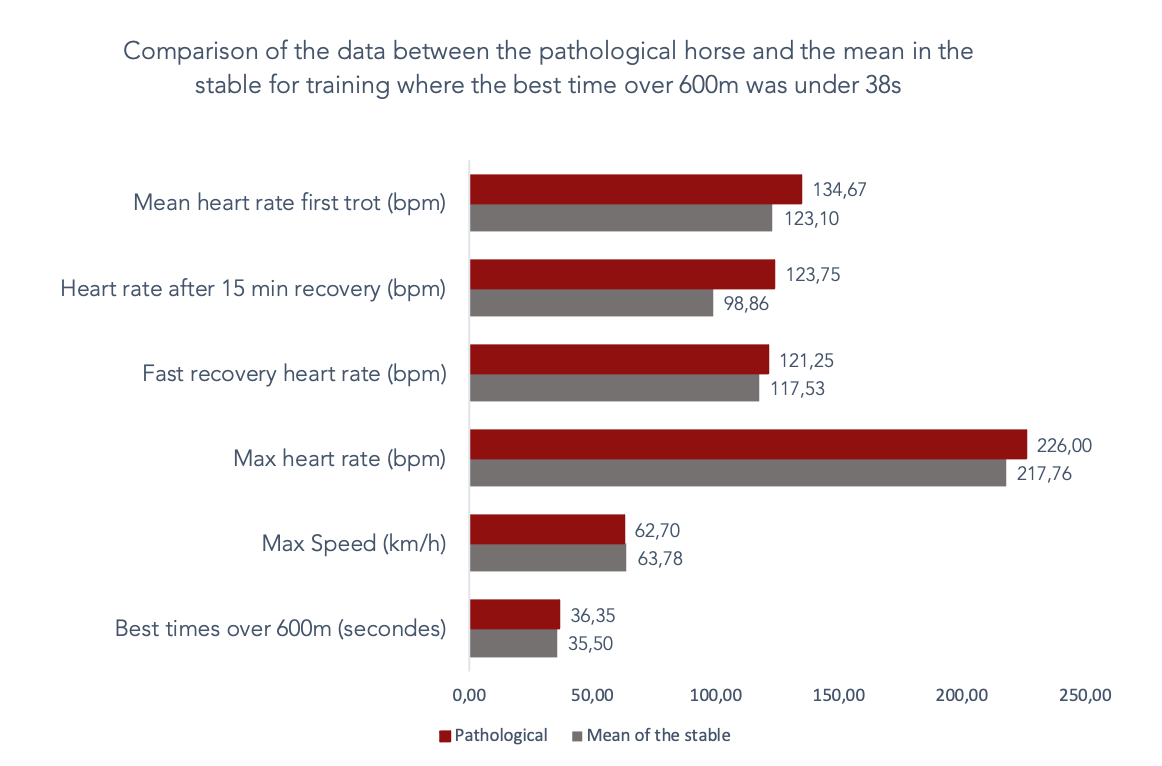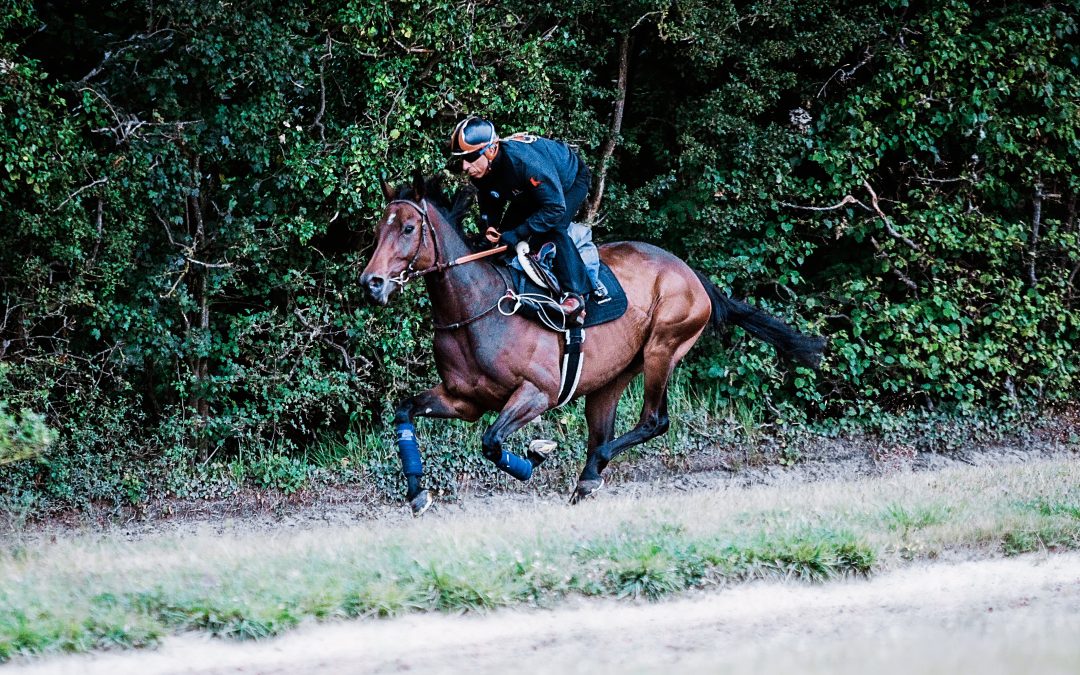Providing veterinarians with a real diagnostic challenge, underperformance in the racehorse can be difficult to investigate if the horse’s environment does not benefit from reliable technologies to collect historical data. Indeed, it is difficult to determine the cause of underperformance without almost daily monitoring. The symptoms to be identified are most often subclinical, i.e. they are difficult to detect at rest and during effort. The detection of under-performing horses within the racing industry is a real challenge for institutions. Carrying out prevention and detection work could in fact make it possible to avoid serious accidents on the training track or on D-day at the racecourse.
In order to detect the elements influencing the performance of the athletic horse, it is interesting to analyse his evolution during an exercise because things that do not occur at rest can appear.
In a series of two articles, we will analyse two cases of underperformance encountered by Dr Emmanuelle van Erck during her veterinary practice.
Investigation of underperformance in racehorses thanks to tangible data
The first case deals with a 2 years old young colt who had a promising first race. However, as time goes by, the trainer realises that he shows less progress than other horses of his age. The first thing to do in order to investigate the reasons for this decrease in performance is to compare the data of this horse with the average of the horses in the stable.

Firstly, there is no apparent difference in speed and training times between the pathological horse and the other horses in the stable. However, when we look at heart rates and recovery, we notice that after 15 minutes of recovery, the heart rate remains abnormally high in the pathological horse.
In order to deepen the analysis of this anomaly, it is important to take a closer look at the training.



By overlapping the speed and heart rate curve, we can see that the heart rate remains abnormally high: when the horse decelerates, the heart rate remains high. It should decrease in the same time as the effort. This analysis confirms the first observation made during the comparison with the other horses in the stable.
This type of case is specific to horses with hypoxemia. This means that the horse has a very high exercise-induced oxygen debt. To compensate for this debt, the heart rate remains high beyond the deceleration phase.
In order to detect when the problem has occurred, it is necessary to analyse the evolution of the data over time. These must come from exercises of equal intensity (maximum heart rates and speeds are at the same level).

The heart rate after 15 minutes (witness of the recovery) increases from May 11th, and remains high for a few weeks. From a certain time onwards, the horse had difficulties in recovering. The analysis of the ECG (collected automatically at each training session with EQUIMETRE) allows us to determine the reasons for this increase.
The ECG is a great way to detect arrhythmias: it can highlight an abnormal heart rhythm or a premature heartbeat.
The ECG of the pathological horse contains arrhythmias (red arrows) and is therefore abnormal as it presents extrasystoles regularly during exercise. The veterinarian must then investigate this case in order to determine the cause of the arrhythmias. They can be the secondary result of several conditions that cause oxygen deficiency.
At the post-exercise osculation, the horse presented a slight murmur which was investigated using a cardiac ultrasound. This allowed the detection of a major valve insufficiency which triggered the extrasystoles observable on the ECG.

Conclusion
This horse unfortunately has a primary heart problem and cannot be left to train as it is. In the best case, he would present a stagnation of progress in training and a loss of performance and in the worst case, he could collapse in the race. This horse is therefore in need of reform.
This case is an excellent example of communication between trainer and veterinarian. The latter had objective and time-extended data that allowed them to detect the cause of the underlying problem in order to make the best decision for the horse’s well-being.
Technology at the service of the performance and well-being of the equine athlete
The role of new technologies today is to make the link between veterinarians and trainers. It is impossible for the veterinarian to be at the track every day. Thus, thanks to monitoring, the latter can carry out preventive work remotely by following his patients’ indicators from his computer. If the trainer detects an alarming sign, he can talk to his veterinarian about it and show him the data history. These connected systems improve the monitoring of horses and the connection between the different members of their environment.
Human athletes all benefit from these technologies to protect them on a daily basis while maximising their chances of performing. The equestrian world in turn has the opportunity to protect its athletes!
Are you interested in this case study of underperformance? Here’s another one!
Keywords: racehorse underperformance, equestrian prevention, racehorse performance, data follow-up, racehorse heart rate at rest and during effort, racehorse evolution, racehorse ECG, #RaceAndCare

